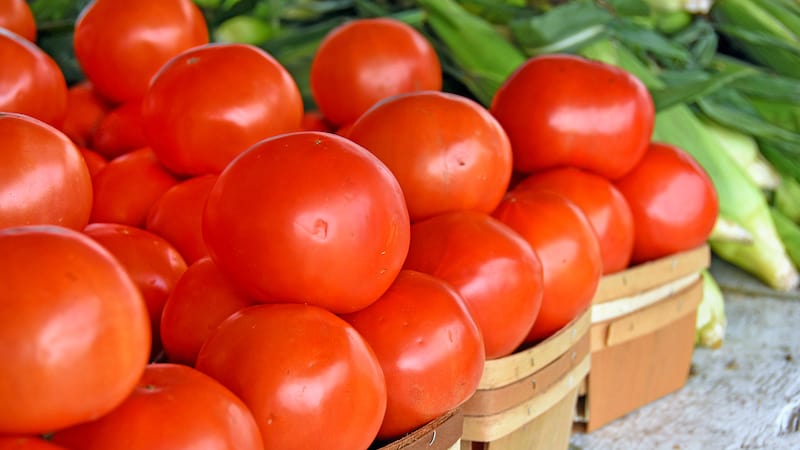Make the Most of Summer Vegetables
Finding and storing these bundles of taste and nutrition

Come summertime, stands at farmers markets are overflowing with corn, cucumbers, tomatoes and zucchini – and there’s not much better than summer produce when it comes to a good meal. Here’s what to look for to bring home the best summer vegetables.
Tips for four favorite summer vegetables
Corn
Although classified as a vegetable by the USDA, corn is actually a grain. High in complex carbohydrates, corn contains some protein and fiber and provides some potassium and vitamin C, plus a variety of trace minerals.
Shopping tips: The best way to buy corn is in the husk, which protects the kernels from dry air. Ears with moist green husks are fresher than those with dry brown ones. The tassel should be golden brown.
Rather than peeling back the husk, feel around through the husk for plump, resilient kernels. Take the corn home immediately; don’t let it sit in a hot car.
Storage tips: The sooner you can eat corn after purchase, the sweeter it will be, as the sugar in corn begins converting into starch as soon as it’s picked. If you can’t eat your corn right away, refrigerate it, with the husks left on, in a plastic bag, and cook within two days.
Cucumbers
While the cucumber isn’t known as a nutrition powerhouse, it does provide a small amount of fiber, minerals, and vitamins – particularly vitamin C. At 95% water content, a cup of cucumber slices is nearly as thirst-quenching as a glass of water.
Shopping tips: The most common cucumbers are the English or European greenhouse cucumber and the American slicing cucumber, which has a slightly thicker skin and more seeds. Don’t overlook other varieties like the pickling cucumber (aka Kirby) and Middle Eastern slicer. Select firm cucumbers that feel heavy and avoid those that have any yellow or have soft spots at the ends.
Storage tip: Store cucumbers in a ventilated plastic bag in the crisper of your refrigerator.
Tomatoes
A medium-size fresh summer tomato is an excellent source of vitamins A and C. Ripe tomatoes also contain the carotenoid lycopene (this is what makes tomatoes red), which may help prevent some types of cancer, particularly prostate cancer. Snack on cherry and grape tomatoes and make sauces with Roma or plum tomatoes.
Shopping tips: Buy tomatoes as close to home as possible. Look for those that are plump with smooth skin and give slightly when pressed; smell the stem end for that distinctive, sweetly acidic aroma.
Storage tip: Refrigeration destroys the flavor of tomatoes; free them from any packaging and store at a cool room temperature, away from sunlight.
Easy, Cheesy Grilled Stuffed Tomatoes
Zucchini
Zucchini has just 29 calories per 1-cup serving. It offers lutein, beta carotene and zeaxanthin, antioxidants that promote good vision. Additional nutrients include potassium, magnesium, manganese, folate, fiber and vitamins C and A.
Shopping tips: Look for shiny, dark green zucchini with moist stem ends at least 1 inch in length. The zucchini should be firm to the touch and heavy in your hand. Avoid zucchini with breaks, gashes or soft spots.
Storage tips: Store zucchini in the refrigerator for one to two weeks. Or freeze for several months: Slice, grate or chop the zucchini, blanch for 2 minutes in boiling water, then chill; pack in a plastic freezer bag or airtight container, leaving an inch of space at the top, and freeze.
5 Elemental Grilled Vegetable Recipes
EatingWell is a magazine and website devoted to healthy eating as a way of life. Online at www.eatingwell.com.
©2023 Dotdash Meredith. All rights reserved. Used with permission. Distributed by Tribune Content Agency, LLC.

